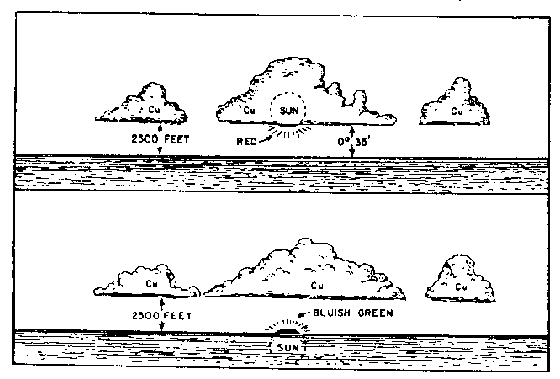 |
Science Frontiers ONLINE No. 119: Sep-Oct 1998 |
|
|
Some Green Flashes Are Yellow
Rarely, green flashes are observed just as the tip of the setting sun disappears below the horizon. Most of these flashes have a perfectly good explanation. The earth's atmosphere acts like a prism and disperses the light of the sun into a spectrum, and the last portion of this spectrum that one usually sees is green. Conditions have to be just right, though. A flat horizon and a layer of warm air are important. But even when conditions seem perfect, the green flash does not always appear, and all one sees is the red tip of the sun sinking out of sight.
Even if the patient observer is rewarded by a green flash, he may really have been deceived, for there are "false" green flashes. A. Young, San Diego State University, reported at a recent meeting of the American Astronomical Society on a peculiar type of optical illusion that can afflict observers of the setting sun. It seems that the intense red light of the sun near the horizon can bleach the red-sensitive receptors in the retina so that an intent observer becomes temporarily color blind to red. When this happens, the observer sees the yellow part of the dispersed solar spectrum as being green (yellow minus red = green). The true green flash may never have appeared at all.
(Seife, Charles; "Don't Let Your Eyes Deceive You," New Scientist, p. 5, June 5, 1998.)
Comments. You are right! Blue lies beyond green in the spectrum. Much rarer than green flashes are blue flashes.
Jules Verne even wrote a novel involving this famous phenomenon: Le Rayon Vert.
 |
| Reversing the sequence, red flashes are sometimes observed as the bottom edge of the sun dips below a sharply-defined cloud deck. (From: Rare Halos...) |